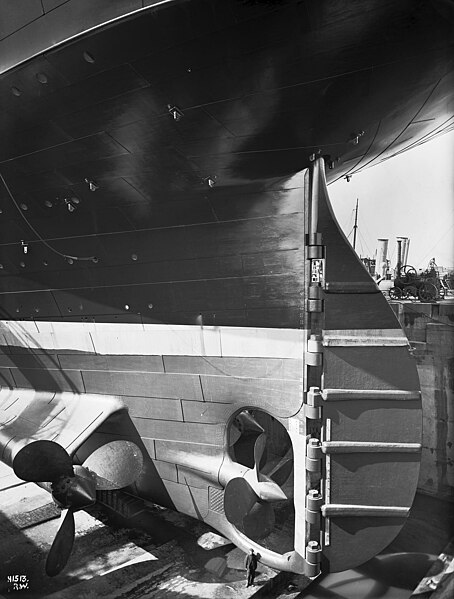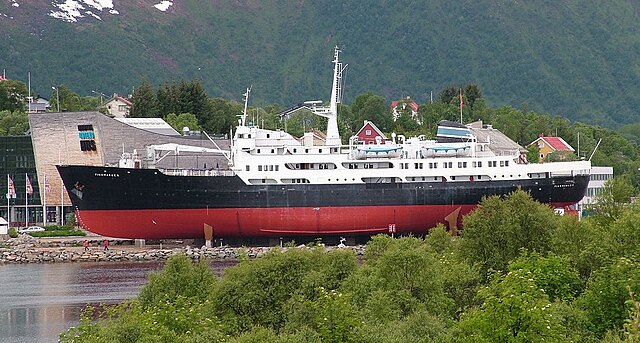A rudder is a primary control surface used to steer a ship, boat, submarine, hovercraft, airship, or other vehicle that moves through a fluid medium. On an airplane, the rudder is used primarily to counter adverse yaw and p-factor and is not the primary control used to turn the airplane. A rudder operates by redirecting the fluid past the hull or fuselage, thus imparting a turning or yawing motion to the craft. In basic form, a rudder is a flat plane or sheet of material attached with hinges to the craft's stern, tail, or after end. Often rudders are shaped so as to minimize hydrodynamic or aerodynamic drag. On simple watercraft, a tiller—essentially, a stick or pole acting as a lever arm—may be attached to the top of the rudder to allow it to be turned by a helmsman. In larger vessels, cables, pushrods, or hydraulics may be used to link rudders to steering wheels. In typical aircraft, the rudder is operated by pedals via mechanical linkages or hydraulics.

Modern ship rudder (the long red rectangle behind the propeller)
RMS Olympic's rudder turned
Stern-mounted steering oar of an Egyptian riverboat depicted in the Tomb of Menna (c. 1422–1411 BC)
Steering oar of a Roman boat, 1st century AD (RG-Museum, Cologne)
A hull is the watertight body of a ship, boat, submarine, or flying boat. The hull may open at the top, or it may be fully or partially covered with a deck. Atop the deck may be a deckhouse and other superstructures, such as a funnel, derrick, or mast. The line where the hull meets the water surface is called the waterline.
Hull form lines, lengthwise and in cross-section
Ship above the water with the entire hull visible
Royal Navy World War II MTB planing at speed on calm water showing its hard chine hull with most of the forepart of the boat out of the water.







